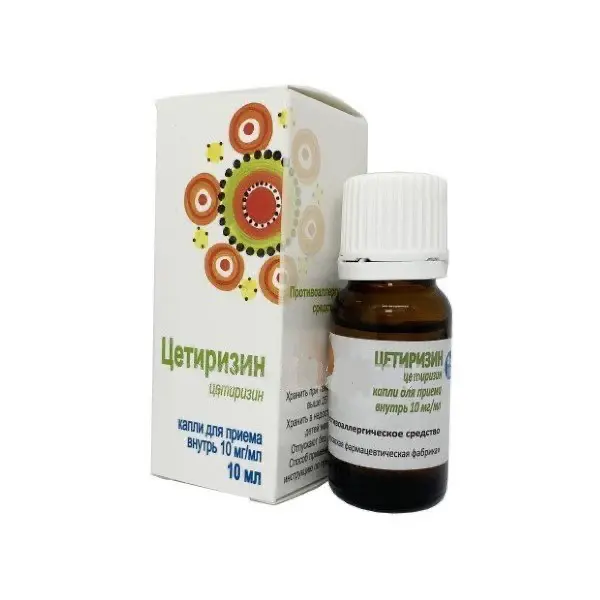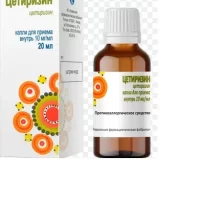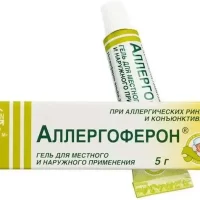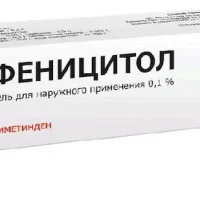Description
Cetirizine Pharmacodynamics
Mechanism of action
Cetirizine – the active substance of the drug Cetirizine is a metabolite of hydroxyzine, has an antihistamine effect with anti-allergic action. Cetirizine belongs to the group of competitive histamine antagonists and blocks H1-histamine receptors with little effect on other receptors and has almost no anticholinergic and antiserotonin action.
Cetirizine affects the histamine-dependent stage of immediate allergic reactions, also reduces the migration of eosinophils and limits the release of mediators in delayed-type allergic reactions. It practically does not pass through the blood-brain barrier and therefore is almost incapable of reaching central H1 receptors.
Pharmacodynamics
In studies of the effects of histamine on the skin, the effects of cetirizine at a dose of 10 mg began after 1 hour, peaked from the 2nd to 12th hour, and were still observed at statistically significant levels after 24 hours. In addition to its antihistamine effect, cetirizine also has an anti-inflammatory effect and thus has an effect on the late phase of the allergic reaction:
– at a dose of 10 mg once or twice daily, inhibits the late phase of eosinophil aggregation in the skin;
– at a dose of 30 mg daily, inhibits the release of eosinophils into the bronchial alveolar fluid after allergen-induced bronchial constriction,
– Inhibits the kallikrein-induced late inflammatory response,
– Suppresses the expression of inflammatory markers such as ICAM-1 or VCAM-1,
– inhibits the action of histaminoliberators such as PAF or Substance P.
Indications
The use of Cetirizine drops is indicated in adults and children from 6 months of age for the relief of:
– Nasal and ocular symptoms of year-round (persistent) and seasonal (intermittent) allergic rhinitis and allergic conjunctivitis: itching, sneezing, nasal congestion, rhinorrhea, lacrimation, conjunctival hyperemia;
– Symptoms of chronic idiopathic urticaria.
Administration in children aged 6 to 12 months is possible only by prescription and under strict medical supervision.
Contraindications .
– Hypersensitivity to cetirizine, hydroxyzine or any piperazine derivatives or other drug components;
– terminal stage of renal failure (creatinine clearance <10 ml/min);
– children under 6 months of age (because of the limited data concerning efficacy and safety of cetirizine administration).
Caution
– Chronic renal insufficiency (in case of creatinine clearance >10 ml/min, the dosage regimen should be corrected);
– elderly patients (with age-related decrease in glomerular filtration);
– epilepsy and patients with increased seizure readiness;
– Patients with predisposing factors to urinary retention;
– Children less than 1 year of age;
– concomitant use with alcohol.
– Breast-feeding period;
– pregnancy.
How to use and dosages.
The drug is intended for oral use.
Adults and children over 12 years old.
Cetirizine drops should be used at a dose of 10 mg (20 drops) 1 time per day.
Children aged 6 to 12 years.
The drug is used at a dose of 5 mg (10 drops) 2 times a day.
Children aged 2 to 6 years.
The drug is used at a dose of 2.5 mg (5 drops) 2 times a day.
For children with impaired renal function, doses should be adjusted individually, depending on the patient’s creatinine clearance, age and body weight.
Elderly patients.
With normal renal function in such patients, there is no need to adjust the dose.
Patients with impaired liver function.
Such patients do not need to adjust the dose.
Patients with impaired renal function.
There are no documented data on the ratio of efficacy / safety for patients with impaired renal function. Since Cetirizine drops is mainly excreted by the kidneys, if alternative treatment cannot be used, the dosage should be individualized, depending on the state of renal function. Refer to the table below and adjust the dose according to the information provided.
Cetirizine drops should be sprinkled in a spoon or dissolved in water and taken orally. If dilutions are used, it should be taken into account, especially when used in children, that the volume of water to which the drops are applied must correspond to the amount of liquid that the patient can swallow. The diluted solution should be taken immediately.





